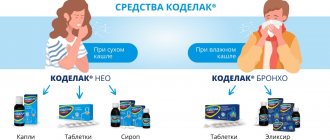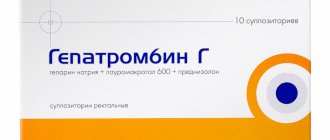Antihistamines are aimed at eliminating allergies in all its manifestations. During their action, the drugs block special receptors that are involved in the development of an allergic reaction. Especially if this is an immediate reaction, where the main role belongs to an organic compound - histamine. Under provoking factors, histamine becomes active in the human body and can lead to such types of allergies as:
- allergic rhinitis;
- allergic conjunctivitis;
- hives;
- angioedema;
- reaction to an insect bite;
- allergies to medications (tablets, sprays, etc.);
- food allergies;
- skin allergies, allergic dermatosis.
Taking an antihistamine (drops, tablets, ointment) in these cases is the first line of treatment. All medications in the form of tablets or drops act on H1 receptors located in the brain, blood vessels, smooth muscles, cardiac tissue, cartilage tissue, etc. [1].
The role of histamine in allergic reactions
Histamine is a biologically active substance produced by the body to regulate vital functions (blood circulation, respiration, digestion). It is concentrated in mast cells, white blood cells that are part of the immune system.
Under normal conditions, there is little histamine in the human body and it is inactive. But when certain substances enter the body, their active production begins. When the allergen binds to immunoglobulin, mast cells degranulate (release substances that cause an inflammatory response). Histamine is released, leaves the cells, and the body comes under its influence. It causes:
- hives;
- swelling of the mucous membranes;
- bronchospasms;
- decreased blood pressure;
- digestive disorders;
- confusion;
- slowing down the conduction of nerve impulses.
The first three reactions are allergic. They are the immune system's response to contact with an irritant. Most allergic reactions develop immediately.
Antihistamines - locally
The pathogenesis of allergic rhinitis is quite complex. It involves not only histamine, which enters tissues from mast cells, but also cytokines, mediators and other biologically active substances. However, antihistamines, which block only one stage of the pathological process of allergies, have shown high effectiveness both when used systemically and locally. We emphasize: the effectiveness of both oral and local antihistamines has been confirmed in many clinical studies [1]. Today, several H1-histamine receptor blockers are used topically. All these drugs belong to the over-the-counter group.
Azelastine
- II generation H1-histamine receptor blocker. Available in two forms: eye drops and nasal metered spray. It has an antihistamine, antiallergic effect, stabilizes the membranes of mast cells, preventing the release of biologically active substances from them that contribute to the development of an allergic reaction and inflammation. The peculiarity of azelastine is the duration of the antiallergic effect.
Nasal spray
relieves symptoms of rhinitis (itching, nasal congestion, sneezing, rhinorrhea) within 15 minutes after use, the effect lasts up to 12 hours or longer [2]. Suitable for the treatment of hay fever in adults and children over 6 years of age.
Eye drops
, along with the antiallergic effect, have an anti-inflammatory effect. Unlike nasal spray, they can be used both for the treatment and prevention of allergic conjunctivitis. Allowed for children from 4 years old.
When applied topically, azelastine is practically not absorbed into the blood, which explains the high safety profile. Even with long-term use in high doses, the drug does not exhibit the cardiotoxic effect characteristic of second-generation H1-histamine receptor blockers.
The effectiveness and high safety profile of azelastine for the treatment of seasonal allergic rhinitis in adults and children has been confirmed in clinical studies [3].
What should I warn the client about?
When using a nasal spray, it is important to apply the injection correctly - detailed techniques are described in the instructions for use. If you tilt your head incorrectly when administering the drug, a bitter taste may appear in your mouth.
«
What can trigger an increase in histamine?
Allergens are substances that provoke increased release of histamine. Medicine has studied many allergens that can be divided into such groups.
Exogenous infectiousExogenous non-infectiousEndogenousVirusesFoodProtein-containing compounds that make up the cells of the bodyBacteriaPolenFungiIndustrialHouseholdMedicinal
Endogenous allergens are produced by the body itself. They cause autoimmune diseases (attacks of the immune system on healthy tissues).
Exogenous ones enter the body from the environment - through food, plant pollen, house dust. Industrial allergens include a variety of chemicals (dyes, cleaning products, fragrances).
Third generation of drugs
This group includes products whose price can be significantly higher than the first generation. But their use is almost always absolutely safe:
- Tsetrin
(cetirizine). It is considered one of the best anti-allergy medications. It does not affect the liver, does not reduce attention, and is relatively inexpensive. - Telfast
(fexofenadine). Does not interact with any medications, has all the benefits of the best allergy remedies. - Erius
(desloratadine). Included in the group of the best remedies for acute allergic reactions. Protects cells from destruction. Several times more effective than 2nd generation products.
Doctors may prescribe other drugs that are part of the advanced generation of medications for allergic reactions. But even in this case, a person may develop severe side effects; if they occur, the drug should be changed to an analogue with a different active ingredient.
Regardless of how effectively a drug relieves symptoms, it will not be able to cure allergies forever.
Modern medications also include hormonal ointments and other types of allergy medications. But their use should be treated very carefully. The number of unforeseen reactions of the body when working with hormones can be large.
Price comparison
The list of allergy medications with price includes segment leaders among 2nd and 3rd generation medications. The cost may vary depending on the number of tablets in the package.
| Name | Approximate price (rubles) |
| Tsetrin | 150 |
| Telfast | 550 |
| Erius | 600 |
| Fenistil | 300 |
| Claretin | 150 |
| Gistalong | From 150 |
Other drugs included in the group of modern allergy medications also cost about the same. But there are also analogue medications, the price of which may be lower. But it is impossible to talk about 100% compliance with their effectiveness.
Symptoms of an allergic reaction
A wide range of symptoms is known, but this does not mean that the same clinical picture occurs upon contact with all allergens. Depending on the type of hypersensitivity, the body reacts differently:
- atopic: rhinitis, conjunctivitis, dermatitis, asthma, Quincke's edema;
- reagin: inflammation of the mucous membranes, autonomic disorders;
- cytotoxic immune: damage to cells and tissues (immune thrombocytopenia, hemolytic anemia, etc.);
- immunocomplex: inflammation of joints, kidneys, skin manifestations.
There are also delayed-type reactions that do not make themselves felt immediately upon contact with the irritant. After two days, the allergen combines with lymphocytes, which leads to the development of an infectious-allergic disease, for example, chronic neurodermatitis.
Differences between the first generation of drugs
Some time ago, only first-generation drops and tablets were used to treat allergies, and they had quite a lot of disadvantages. The main disadvantage of type 1 antihistamines is poor and quickly reversible contact with histamine receptors. This meant that the drugs had to be used in large quantities, which inevitably led to addiction and side effects. By acting directly on brain receptors, they almost always resulted in:
- to vision problems;
- to the development of dry mouth;
- to a slowdown of all reactions associated with the central nervous system - drowsiness, lethargy, attention disorder;
- to the development of arrhythmia and other heart rhythm disturbances;
- to increased excitability, aggression, hyperactivity;
- to digestive disorders, including constipation.
First generation medications gave relatively quick results, alleviating the patient’s symptoms, but this effect did not last long. The risk of addiction was unreasonably high, but medicine could not offer any alternatives.
How to eliminate allergy symptoms
The more free histamine is released, the more severe the allergic reaction. In some cases it causes inconvenience (constant sneezing, itchy eyes), in others it poses a threat to life (with bronchospasm a person cannot breathe). You can stop the reaction:
- stopping contact with the allergen;
- neutralizing histamine with an antihistamine;
- symptomatic therapy (for example, inhalation to immediately expand the lumens of the bronchi).
In the event of the development of anaphylactic shock, accompanied by a decrease in blood flow and laryngeal edema, it is important to promptly eliminate the threat to life. The set of measures includes the administration of adrenaline and ensuring air flow into the lungs (intubation).
Types of antihistamines
First-generation drugs could block histamine receptor signals only after penetrating the barrier between the circulatory and central nervous systems. As a result, the effects on the central nervous system could not be avoided. Because of this, antihistamines caused drowsiness and loss of coordination.
Pharmacologists took this shortcoming into account when creating second-generation drugs. They do not penetrate the mentioned barrier, act selectively, and do not have a sedative effect.
Third generation antihistamines are metabolites of their predecessors. They give the same effect at a lower dosage and do not affect the functioning of the cardiovascular system. However, some allergists and immunologists do not agree with separating them into a separate group and classify them as the second generation.
In 2015, the Consensus working group on new generation antihistamines led by Professor S.T. Holgate concluded that none of the existing drugs can be classified as third generation.
Examples of AGPs of different generations
AGP 1st generationAGP 2nd generationAGP 3rd generation*DiphenhydramineLoratadineCetirizineTavegilClaritinZyrtecSuprastinKestinCetrinDramamineVisin and Tizin AllergiTelfastDiazolinAllergodilFexofenadineAtarkcFenistilAllerfex
*according to supporters of their existence
Offers from suppliers and manufacturers, descriptions from the “Encyclopedia of Medicines” can be found by following the links in the Classification section.”
Antiallergic drugs - drugs for the prevention and treatment of allergic diseases, occupy one of the most important segments of the pharmaceutical market. The incidence of allergoses is steadily increasing. The frequency of acutely developing severe allergic reactions is high, where the patient’s life depends on timely pharmacotherapy. The number of chronic patients is also increasing, the quality and duration of life of which are determined by the level and adequacy of the therapy provided. The results of a survey of doctors and pharmacists show that specialists have a high need for information about the clinical pharmacology of antiallergic drugs. In a narrow sense, antiallergic drugs include antagonists of allergy mediators and stabilizers of mast cell membranes, the pharmacological characteristics of which are the subject of this article. Antagonists of allergy mediators are more often called antihistamines. The term is generally accepted, but is becoming outdated because it does not reflect the pharmacodynamics of most drugs, especially representatives of the latest generations, which are antagonists not only of histamine, but also of other mediators, in particular serotonin, bradykinins, and leukotrienes. The mechanism of action of drugs in this group is based on reversible competitive inhibition of H1-histamine receptors. In tissues, histamine is synthesized by mast cells, and in the blood by basophils. It serves as a mediator of various physiological and pathological reactions in various tissues and cells. Histamine is not only associated with mast cells and basophils: it has also been found in platelets, gastric mucosa, endothelial cells and neurons in the brain. Histamine has a direct effect on the heart, disrupting both its contractility and electrophysiological parameters. It also has a pronounced hypotensive effect and is an important biochemical mediator of inflammation in allergic diseases. The action of histamine is mediated by three types of receptors, designated H1, H2 and H3. Acting through the H1 and H2 receptors, histamine causes arterial hypotension (due to vasodilation), tachycardia, hyperemia and headache, while activation of only the H2 receptors leads to increased secretion and acidity of gastric juice. Stimulation of H3 receptors located in the brain may have a negative modulatory effect. Blockade of H1 receptors leads primarily to suppression of the allergic reaction, while blockade of H2 receptors primarily inhibits the secretion of gastric juice. Antihistamine drugs that compete with histamine at the level of H1 receptors in target organs are designated as H1 blockers or H1 receptor blockers. They have a weak effect on H3 receptors (the effects associated with them have not been studied enough) and have virtually no effect on H2 receptors. Thanks to the blockade of H1 receptors, antihistamines have a bronchodilator effect in bronchospasm caused by histamine, an antispasmodic effect on intestinal smooth muscles, prevent vasodilation (except coronary ones, the tone of which is regulated by H2 receptors) and “blood loss into the own vessels” caused by histamine. They normalize the increased permeability of the vascular wall, especially in the capillary bed. Thus, H1 receptor blockers prevent or minimize allergic reactions by blocking histamine-induced effects, and the effectiveness of antihistamines is ensured by their ability to competitively inhibit the effect of histamine on the loci of specific H1 receptor zones in effector tissue structures. There are several classifications of antihistamines. Based on their chemical structure, they are divided into the following groups:
| 1.Ethanolamines | 4. Piperazines |
| Dimenhydrinate (aviomarin) | Hydroxyzine (atarax) |
| Diphenhydramine (diphenhydramine, benadryl) | Citirizine (Zyrtec) |
| Doxylamine | Meclozine (Bonine) |
| Clemastine (tavegil) | 5. Alkylamines |
| Setastin (Loderix) | Acrivastine (Semprex) |
| 2.Ethylenediamines | Dexchlorpheniramine* |
| Pyrilamine* | Brompheniramine* |
| Tripelenamine* | Dimetindene (fenistil) |
| Chlorpyramin (suprastin) | Triprolidine* |
| 3.Piperidines | Chlorphenamine, chlorpheniramine (Avil) |
| Astemizole (Gistalong) | 6.Phenothiazines |
| Azatadine* | Quifenadine (fenkarol) |
| Bamipin (Soventol) | Promethazine (prazine, pipolfen) |
| Diphenylpyralin* | 7. Various |
| Levocabastine (histimet) | Azelastine (allergodil) |
| Loratadine (Claritin, Lomilan) | Tranilast |
| Terfenadine (Trexyl) | Mebhydrolin (diazlin) |
| Fexofenadine (Telfast) | Oxatomide(tinset) |
| Cyproheptadine (peritol) | Fenspiride (erespal) |
| Ebastine (kestin) |
Note: * the drugs are not registered in the Russian Federation.
Structural features determine some of the properties of the drugs. Most ethanolamine derivatives are characterized by pronounced m-cholinergic and sedative effects. Among the alkylamines, there are the most active H1 receptor antagonists; they are characterized by weak sedative properties (although some patients sometimes exhibit a pronounced sedative effect), but quite often an increase in the excitability of the nervous system is observed. Most piperazine derivatives also exhibit a mild sedative effect (except hydroxyzine). Phenothiazines have anticholinergic properties similar to those of ethanolamine derivatives. Drugs in this group are often used as antiemetics. Piperidine derivatives have the most pronounced selectivity towards H1 receptors in the absence or weak expression of anticholinergic properties and effects on the nervous system. But the increasingly used division of drugs into generations is more justified:
| 1st generation | 3rd generation |
| Diphenhydramine | Akrivastine |
| Mebhydrolin | Astemizole |
| Promethazine | Dimetinden |
| Chloropyramine | Terfenadine |
| 2nd generation | 4th generation |
| Doxylamine | Ebastine |
| Hifenadine | Azelastine |
| Clemastine | Loratadine |
| Cyproheptadine | Fexofenadine |
| Fenspiride | |
| Cetirizine |
Comparative characteristics of the main antagonists of allergy mediators of 1-4 generations
(Lesiovskaya E.E. et al, 2001)
The on-line version of the article does not provide
first generation antihistamines
- ethanolamines, ethylenediamines, alkylamines, piperazines and phenothiazines - in the treatment of allergic rhinoconjunctivitis, urticaria and other allergic diseases has been established for a long time. However, although all of these drugs quickly (usually within 15-30 minutes) alleviate allergy symptoms, most of them (for example, diphenhydramine and chloropyramine) have a pronounced sedative effect and can cause unwanted reactions at recommended doses, interact with other drugs and alcohol. The sedative effect is due to the ability of first-generation antihistamines to penetrate the blood-brain barrier. The use of these remedies is effective for severe runny nose of allergic origin, sneezing and eye allergy symptoms. They are less effective for nasal congestion, a symptom not associated with endogenous histamine release.
Antihistamines are the first choice for maintenance treatment of chronic urticaria, and second-generation drugs are as effective in reducing urticaria and itching as first-generation drugs. Under the influence of antihistamines for chronic urticaria, allergic inflammation of the skin decreases after a few hours. It has been established that second-generation drugs (clemastine, cyproheptadine) reduce the number, size and duration of urticarial lesions. Topical use of antihistamines may cause sensitization, so it is better to prescribe them orally. Second-generation antihistamines selectively act on peripheral H1 receptors and have less neurotoxicity and sedative effect.
Third generation antihistamines include: astemizole, levocabastine, hydroxyzine, acrivastine, dimethindene. Antihistamines are one of the most commonly used treatments for allergic rhinoconjunctivitis. They provide very fast and effective relief of the following symptoms: rhinorrhea, itching, sneezing, eye symptoms. Antihistamines are also the first choice in the treatment of chronic urticaria. Identification of the allergen that provokes the development of symptoms in a particular patient makes it possible to use tactics to limit exposure to this allergen. Although complete cessation of contact with the allergen can eliminate the symptoms of allergic rhinoconjunctivitis, in practice it is extremely difficult and almost impossible to maintain the elimination effect for a long time. Eliminating contact with the allergen is feasible only for those patients in whom allergic rhinoconjunctivitis is caused by a specific environmental factor, for example, a favorite animal. However, even if the allergen is removed from the patient's environment, the positive effect may last only a few weeks or months. In anyone with chronic urticaria, it is important to obtain a thorough medical history to rule out any type of physical, drug, food, or supplement-related urticaria. However, the cause of urticaria, despite all the care with which the patient and the doctor try to determine it, often remains unclear. This type of urticaria is called idiopathic. Fourth generation drugs - ebastine (kestin), bamipin, loratidine, cytirizine, fensperide. They have a long duration of action, low stimulating activity of central H3 receptors, and are safe for the cardiovascular system. One of these drugs is Ebastine. The structure of diphenylpyraline was adapted to produce ebastine; a long aliphatic side chain was introduced into the nitrogen atom of the piperidine ring. This chain was carefully selected to give the molecule a long duration of action, low stimulatory activity at central H3 receptors, and cardiovascular safety. In addition, the aliphatic side chain was chosen so that the ebastine molecule does not form stereoisomers. This distinguishes ebastine from its main competitors, which have a racemic composition. Thus, ebastine, unlike its main optically active competitors, enters the body in the form of a simple compound and not a mixture of racemates
The drug in a single dose has a rapid antihistamine effect; the maximum antihistamine effect of ebastine coincides with the peak concentration in plasma and is achieved 2 hours after administration.
One study found that ebastine and astemizole, used for a week at a daily dose of 10 mg, equally suppressed the histamine-induced reaction (blister formation and skin flushing) for 24 hours. In contrast, loratadine, cytirizine and terfenadine, recommended for once daily use at a dose of 120 mg, showed marked fluctuations in antihistamine potential in the same studies. Drug interaction studies
According to a study examining the interaction between ebastine 20 mg and alcohol, blood alcohol levels did not change after administration of ebastine, and the usual plasma pharmacokinetics of carebastine were maintained. In addition, ebastine did not change the level of diazepam in the blood plasma and did not enhance the effect of this sedative drug; adiazepam, in turn, did not affect the pharmacokinetics of carebastine. Ebastine in a single dose of 20 mg in 12 healthy individuals did not interact with cimetidine, a known inhibitor of cytochrome P-450 activity in the liver, when the latter was administered repeatedly. Cimetidine did not affect the conversion of ebastine to carebastine and its subsequent elimination.
Taking ebastine at a dose of 20 mg per day for 10 days, accompanied on the 5th day by a single dose of warfarin at a dose of 25 mg, had no effect on prothrombin time and did not cause clinically significant manifestations. The pharmacokinetic parameters of carebastine and mirror isomers of warfarin also did not change. There were no significant changes in the pharmacokinetics of theophylline and carebastine with the combined use of ebastine and theophylline.
The same study, conducted with chronic ketoconazole administration, determined measurable plasma ebastine concentrations (ranging from 20.3 to 55.7 ng/mL) after a single dose of 20 mg ebastine. It turned out that chronic use of ketoconazole changes the metabolism of ebastine in a single dose, leading to its accumulation in the form of an unmetabolized compound. 12 hours after taking ebastine, in 50% of cases its concentration in plasma was close to the lower limit of measurable, and after 24 hours it was not possible to determine ebastine in plasma. The study showed that multiple doses of erythromycin alter the metabolism of a single dose (20 mg) of ebastine, leading to its accumulation as an unmetabolized substance. The interaction of ebastine with ketoconazole and erythromycin (which can prolong the OT interval) has been studied. In both cases of combination therapy, there were pharmacokinetic and pharmacodynamic interactions; there was an increase in the OT interval by 18-19 ms. (4.7%-5%).
There was no interaction between ebastine and theophylline, warfarin, cimetidine, diazepam and alcohol.
In the case of taking ebastine with food, an increase in the concentration of carebastine in plasma and the area under the curve by 1.5-2 times was observed. At the same time, the time to reach maximum concentration did not increase. The use of ebastine with food does not affect the clinical effect of the drug.
So, indications for the use of ebastine and other antihistamines:
- · Year-round and seasonal allergic rhinitis, hay fever;
- · Histamine-mediated dermatoses (atopic dermatitis, urticaria, Quincke's edema, eczema);
- Serum sickness, hemorrhagic vasculitis;
- · Nausea, vomiting, dizziness (including in diseases of “movement”, labyrinthine and vestibular disorders);
- · Diseases of the central nervous system accompanied by increased vascular permeability, including Meniere's syndrome, chorea, encephalitis;
- · Iatrogenic extrapyramidal disorders (for example, while taking antipsychotics);
- · Colds (in combination therapy);
- · Hyperthermia in case of poisoning, infections;
- · Neuroses and neurosis-like conditions, psychoses, accompanied by sleep disturbances, restlessness, and anxiety.
The use of 1st and 2nd generation drugs is gradually being reduced; they are increasingly prescribed for indications not related to allergic reactions.
3rd generation drugs provide a sufficient duration of action; the most effective are 4th generation drugs, which, along with antagonism towards allergy mediators, have a stabilizing effect on mast cell membranes. However, the high cost of treatment makes them inaccessible to most patients. The main disadvantages of mediator antagonists are:
- - lack of a normalizing effect on disorders in the immune system underlying allergic reactions;
- - relatively late intervention in the pathogenesis of an allergic reaction;
- - the need for long-term prophylactic use and cessation of the protective effect immediately after the end of administration;
- - own allergenicity with an increased likelihood of developing allergic reactions with long-term use;
- - various side effects
- — impossibility of use during pregnancy and lactation;
- — restrictions for use in pediatric practice.
Typical side effects are typical for drugs in this group:
- - from the central nervous system - drowsiness, dizziness, headache, feeling of fatigue, decreased attention span;
- - from the gastrointestinal tract - dry mouth, dyspepsia, vomiting, epigastric pain, constipation (typical of drugs with m-anticholinergic action);
- - from the urinary system - urinary retention (typical of drugs with m-anticholinergic action);
- - on the part of the respiratory system - thickening of bronchial secretions, difficulty in sputum separation, a feeling of constriction in the chest (characteristic of drugs with m-anticholinergic action);
- - allergic reactions;
- - increased intraocular pressure, disturbances of accommodation (typical of drugs with m-anticholinergic action).
In addition to these side effects, each drug has its own unique drug complications.
Antagonists of allergy mediators are contraindicated in pregnancy, lactation, risk professions (in the presence of sedation), hypersensitivity to the drug or its structural analogues. Drugs with anticholinergic properties should not be used for glaucoma, prostate adenoma, tachyarrhythmias, stenotic ulcers of the stomach and duodenum, and stenosis of the bladder neck. Some drugs also have other contraindications. In recent years, the search for new antagonists of allergy mediators has been successful - selective leukotriene antagonists zafirlukast (Acolate) and montelukast (Singulair) have been created, zileuton, an inhibitor of 5-lipoxygenase, an enzyme involved in the formation of leukotrienes, is in clinical trials from arachidonic acid in neutrophils, macrophages and mast cells. The drugs eliminate swelling of the mucous membrane and spasm of bronchial smooth muscles caused by a mixture of leukotrienes (LTS4, LTD4, LTE4) called a slow-reacting substance of anaphylaxis. The drugs are indicated for the prevention of attacks in mild to moderate bronchial asthma. The effect develops after a week of use. When prescribing drugs, side effects were noted: dyspepsia, headaches, increased levels of transaminases in the blood plasma
The first stabilizer of mast cell membranes was the sodium salt of cromoglycic acid (intal, cromosol). The drug was developed on the basis of furanochromone kellin from the fruits of Ammi visnaga (L.) Lam. The mechanism of action of sodium cromoglycate is complex:
- - blockade of the secretion of primary and secondary mediators and cytokines from mast cells caused by allergens and nonspecific irritants (physical activity, cold, pollen, etc.);
- - decreased activity of macrophages, neutrophils, eosinophils and platelets involved in the development of allergic reactions;
- - suppression of reflex bronchoconstrictor reactions that occur when vagus nerve receptors and efferent nerves are mediated by C-fibers.
At the molecular level, the membrane-stabilizing effect is associated with inhibition of phosphodiesterase, leading to a decrease in intracellular calcium, and blockade of membrane chloride channels, which reduces the tone of the vagus nerve and the secretion of neuropeptides by C-fibers.
Allergic rhinitis is characterized by copious liquid mucous discharge from the nose. The nasal mucosa swells, swells, and becomes pale gray in color. Itching in the nose, sneezing, and headache are often noted. With allergic inflammation of the nose and its accessory cavities, swelling of the mucous membrane is sometimes so pronounced that so-called allergic polyps are formed. Under the influence of cromosol, polypous changes in the mucous membrane disappear. The drug reduces mucous discharge from the nose, itching in the nose, sneezing, and nasal congestion.
Some patients have increased sensitivity not only to plant pollen, but also to their fruits and seeds. If a person reacts violently, for example, to sunflower pollen, it is possible that seeds and sunflower halva will also be an allergen for him. If the allergen is hazel or birch pollen, then hazelnuts, hazelnuts and even birch sap can also become an allergen. If you are allergic to cereal pollen, you may develop an allergy to products made from rye, wheat flour, rice, oatmeal, and semolina. Those who are allergic to alder or oak pollen may experience severe painful effects when consuming decoctions and infusions of alder cones or oak bark. Patients with hay fever should use medicinal herbs extremely carefully, since many of them have the same allergenic properties as pollen. Honey in any form and quantity, both internally and in cosmetics, is also not recommended. Bees collect pollen from plants; honey contains a lot of plant pollen. Cosmetic creams that contain plant pollen can also provoke hay fever. Factors predisposing to damage to the ENT organs are the predominance of plant-carbohydrate foods in the diet, hereditary seasonality (mainly in the spring), injuries and chronic gastrointestinal diseases. Factors predisposing to damage to the ENT organs are the predominance of plant-carbohydrate foods in the diet, hereditary seasonality (mainly in the spring), injuries and chronic gastrointestinal diseases. The cause of an allergic runny nose can also be house dust, epidermal substances (animal hair, fluff, etc.). The occurrence of a runny nose is influenced by infection, especially chronic infection. Bacteria in the mucous membrane of the nose and its paranasal sinuses not only cause increased sensitivity, but also increase the permeability of the mucous membrane to other allergens, contributing to the development and maintenance of allergic inflammation. Traditional drugs for the treatment of allergic rhinitis - sympathomimetics - reduce the protective properties of the nasal mucosa and thereby contribute to the chronicization of the pathological process. In addition, the use of sympathomimetics can lead to sleep disturbances, nervousness, and anxiety. Their use should be avoided in diabetes mellitus, in patients with hypertension or Graves' disease. In addition, due to regular use of nasal sprays for 3-4 days, rebound hyperemia and increased runny nose are possible. And such a sympathomimetic as phenylpropanolamine, included in many antiallergic drugs, is abused by teenagers, and it is even sold on the US black market as a substitute for cocaine or amphetamine. Even at two or three times the therapeutic dose, this drug can cause severe hypertension, seizures, and intracranial bleeding.
Cromosol is not only a reliable remedy for the prevention and treatment of allergic rhinitis, but is also well tolerated by patients. The drug is poorly absorbed, so its side effects are minimal. Very rarely, at the beginning of treatment, a feeling of irritation of the nasal mucosa may occur, and even less often - coughing, a feeling of tightness in the chest. Cromosol can be administered immediately before imminent contact with the antigen. For chronic allergic rhinitis, Cromosol effectively reduces the severity of symptoms and the need for antihistamines, thereby reducing their unwanted side effects. It is believed that Cromosol not only eliminates the signs of allergic rhinitis, but also effectively prevents seasonal attacks in patients with allergic rhinitis. Unfortunately, the drug is not always effective. Currently, the only way to determine this is through a four-week trial of therapy.
The main advantages and disadvantages of cromoglycic acid:
| Advantages of the drug | Disadvantages of the drug |
| The drug can be used for atopic asthma and exercise-induced asthma | Does not have bronchodilator activity and does not relieve an attack of bronchial asthma |
| Effective regardless of the patient’s age | The effect develops after 10-14 days |
| Due to the short half-life and low bioavailability, there is no danger of accumulation in the body | Requires long term use |
| There are dosage forms of the drug for the treatment of extrapulmonary manifestations of allergies (eye drops, nasal spray, capsules) | Possible irritation of the mucous membrane of the upper respiratory tract, cough, transient bronchospasm, rarely - severe bronchospasm requiring discontinuation of the drug |
| The drug does not have a toxic effect on the fetus, so it can be used in the second and third trimesters of pregnancy | Discontinuation of the drug must be carried out gradually; when the dose is reduced, the symptoms of the disease may resume |
The structural analogue of sodium cromoglycic acid, nedocromil, is 4-10 times superior to it in membrane stabilizing activity, without differing in the mechanism of action.
The ability to reduce the secretion of mediators by mast cells is also expressed to a certain extent in 4th generation allergy mediator antagonists. An intermediate place between the two groups of antiallergic drugs is occupied by ketotifen (zaditen, ketof). It blocks H1 receptors, restores the sensitivity of b2 adrenergic receptors to agonists, reduces the secretion of mediators by mast cells and basophils, and has an inhibitory effect on the activity of leukotrienes and platelet activating factor. The similarity of ketotifen to cromoglycic acid is manifested in its gradual development. It blocks H1 receptors, restores the sensitivity of b2 adrenergic receptors to agonists, reduces the secretion of mediators by mast cells. The effect of the drug does not develop immediately, but against the background of continuous use for 3-6 months. The side effects of ketotifen are close to those of antagonists of allergy mediators. In 10-20% of patients it causes drowsiness and decreased attention. With long-term use, increased appetite, weight gain, and thrombocytopenia are observed. Antiallergic drugs are one of the most widely used groups of drugs.
Research conducted by SPHFA specialists has established that this group is not evenly represented in pharmacies in the northwestern region. Mast cell membrane stabilizers are available in almost all pharmacies, but a variety of dosage forms is provided in only 68% of institutions. The number of allergy mediator antagonists ranges from 48% to 71% of the drugs registered in Russia, with drugs of the 3rd and 4th generations being the least represented, which contradicts the clinical significance of these drugs and does not contribute to providing quality care for patients with allergies. The list of over-the-counter drugs included 9 antiallergic drugs: acrivastine, bamipine, clemastine, sodium cromoglycate, loratadine, mebhydrolin, fexofenadine, chloropyramine, cetirizine, and the list of vital and essential drugs included 4 drugs quifenadine, ketotifen, sodium cromoglycate, nedocromil. It is important that these lists include the most effective and safe drugs. In conditions of constantly growing demand for antiallergic drugs, it is also necessary to expand their domestic production. Literature
1. Lesiovskaya E.E., Sakaeva I.V., Safaryan V.V. Antiallergic drugs on the pharmaceutical market of North-West Russia: pharmacological characteristics. Remedium North-West, 2001, No. 1 2. Chuchalin AG, Kolganova NA Chemaev AL, Grobova OM, Kalinina EP, Tcherbakov IT Associated bronchial and intestinal mucous dysfunction in patients with atopic disease // Abstract form XV Congres Mondial D'asthmologie/XV WORLD Congress of asthmology, 24-27 anpe/ifl 1996. -1996. 3. Gregg Y. Epidemiological aspects in Ashma // Edited ny T3.H. dark, S. Godfrey S 2nd Ed. London, Chapman and Hall (Medical) Ltd. - 1983. ~ P. 242-284. 4. Jackson R., Sears MR, Beagiehole R., Rea MN International Frends in Asthma Chest // 1988. - V. 94.-P. 914-919. 5. Somorin AO, Hunponu Musu 0.0., Mumcuoglu Y. Meiner DC Mite allergy in Nigerians studies of house dust mites in house of allergic patients in Lagos, ir. // J. Med. Sci. -1978. - V- 147. - P. 26. 6. Stjernberg N., Ekiund A., Nystrom L. Rosenhall, Emmelen A., Stromovist LH Prevalence of bronchial asthma and chronic bronchitis in a communit... in Worthern Swedch, relation to environmental, and occupational exposure to sulfur dioxide // Eur. Y. Respira. Dis. -1985. - V. 65. - P. 41-49. 7. Viegi G., Paoletti P., Carrozzi L., et al. Prevalence rates of respiratory symptoms in Italian general population samples; exposed to different levels of airpollution // Environ. Health Perspective. - 1991. - V. 94.-P. 95-99.
Features of the action of antihistamines
First generation antihistamines are not limited to suppressing the activity of the central nervous system. They block receptors for various neurotransmitters, not just histamine, and therefore have a number of side effects:
- increased heart rate;
- nausea and vomiting;
- increased eye pressure;
- stomach pain;
- urinary disturbance;
- dry mucous membranes.
With prolonged use, the patient may lose weight, become overexcited, and lose consciousness. In case of overdose, convulsions are possible.
Second-generation antihypertensives act more selectively, and therefore their use does not cause undesirable reactions from organs other than the heart. Patients should consider the risk of sinus and reflex tachycardia, as well as arrhythmias.
Antihistamines and the stomach
Histamine itself activates the production of gastric juice. Therefore, there is an opinion that blocking it inhibits secretion. This is not entirely true. H1 blockers are used to relieve symptoms of an allergic reaction. H2 blockers can reduce the production of gastric juice:
- Cimetidine;
- Ranitidine;
- Famotidine;
- Roxatidine.
This is another group of antihistamines used to treat gastritis, gastric ulcers, and reflux esophagitis. Allergy sufferers do not use them. Therefore, there is no risk of disrupting digestion in an attempt to combat hives or conjunctivitis.
Allergies get ready!
First, let's find out what contributes to the development of an allergic reaction.
What can cause us to experience sudden itching of the skin, swelling of the mucous membrane of the respiratory tract, abdominal pain and other manifestations of acute allergies? The reason for this is the release of histamine, a mediator that is released in response to an allergen. Therefore, in the fight against allergy symptoms, taking drugs that block histamine receptors, reducing its effect on the body, plays an important role. They are called antihistamines. There are two generations of antihistamine drugs.1, 2 Let's look at them in more detail.








